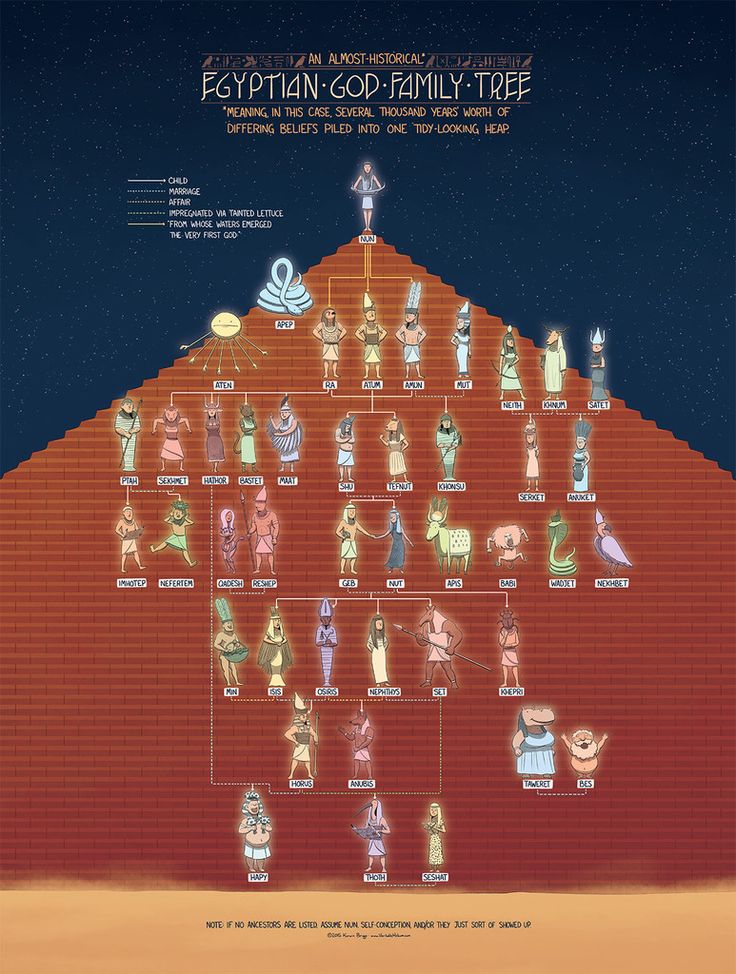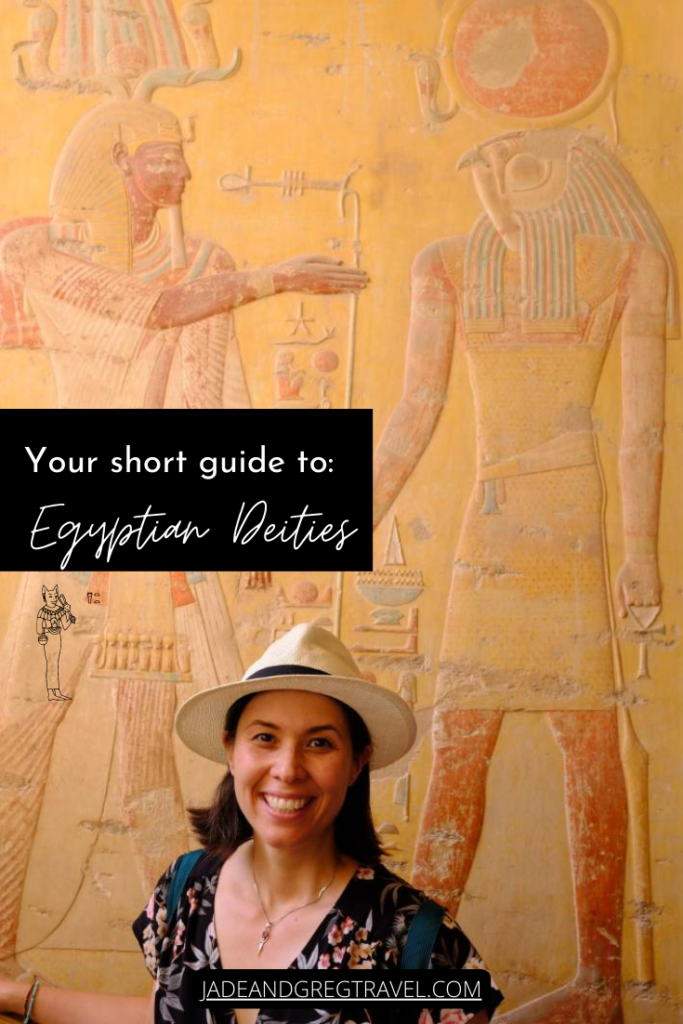The most important Ancient Egyptian Gods & Goddesses that you will encounter in your Egypt travels! Or if you’ve been watching MoonKnight and are curious!
Ancient Egypt has one of the largest most complex pantheon of Deities and myths (as per Wiki), so it can seem very daunting as you start wandering around museums and temples in Egypt….For those of you like myself, who had not studied Ancient Egyptian myths it can feel rather overwhelming.
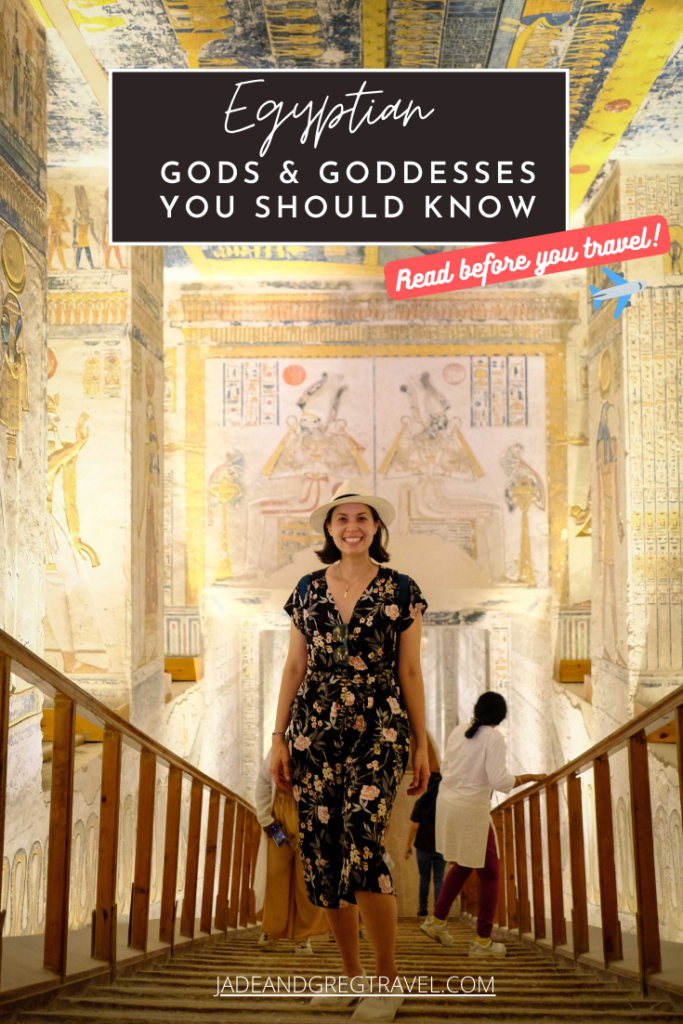
As our Egypt trip drew closer I tried to read books, articles and websites on Egyptian deities attempting to devour everything with little or no time to actually accomplish this! Suddenly, I found myself in the Cairo Antiquities Museum (read about this here!) staring at paintings, papyrus and statues but with no understanding of the stories behind them. I really needed Egyptian Gods and Goddesses 101. So I thought I’d create one for you….
(Also do scroll down to the very bottom for a FULL family tree of Egyptian Gods and Goddesses created by the Korwin Briggs)
How did they come about?
Ancient Egyptians used myths as a means of understanding of the world around them and for religion, society and social values.
Myths appear in many forms, written on tomb walls, as temple decoration, on papyrus as religious or funerary texts, as hymns, and on sarcophagi. As with stories, the deities evolve, blur and birth new tales as time passes.
Remember their entire civilization (from 3500 BCE) spanned at least 3000 years. Wheras, we are only in the year 2023,….so technically their entire civilization was longer than ours!
Disclaimer there are a lot of conflicting stories and ideas and I’m only an Egyptian myth enthusiast. Any errors are of my own making and if you are a specialist please feel free to contact me so I can amend!
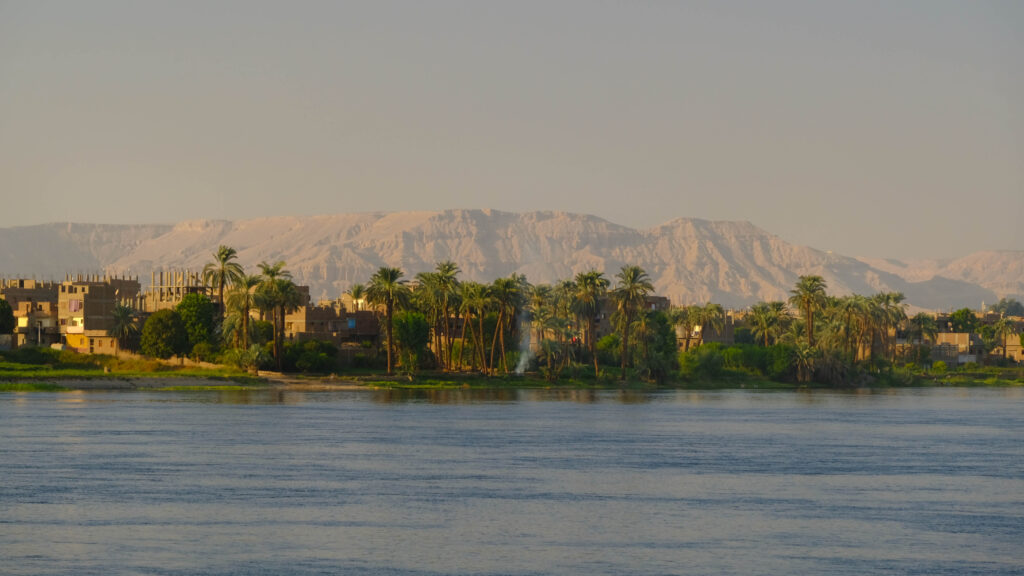
Imagine you are in Ancient Egypt, you see the world around you, and each day the sun rises and sets, each year the river Nile floods bringing fertility and farming that sustained you. Therefore the Sun and Water are vital to life for you and your family.
But there were times of famine, high floods and just past the great river, are areas of harsh desert, and so the Egyptians saw their fragile world along the Nile was a place of stability or maat (=order, also see Goddess Maat below) which was threatened by the chaos of other outside forces.
You will see these themes of Order, Chaos, Renewal resonate throughout the Egyptian religion and myths.
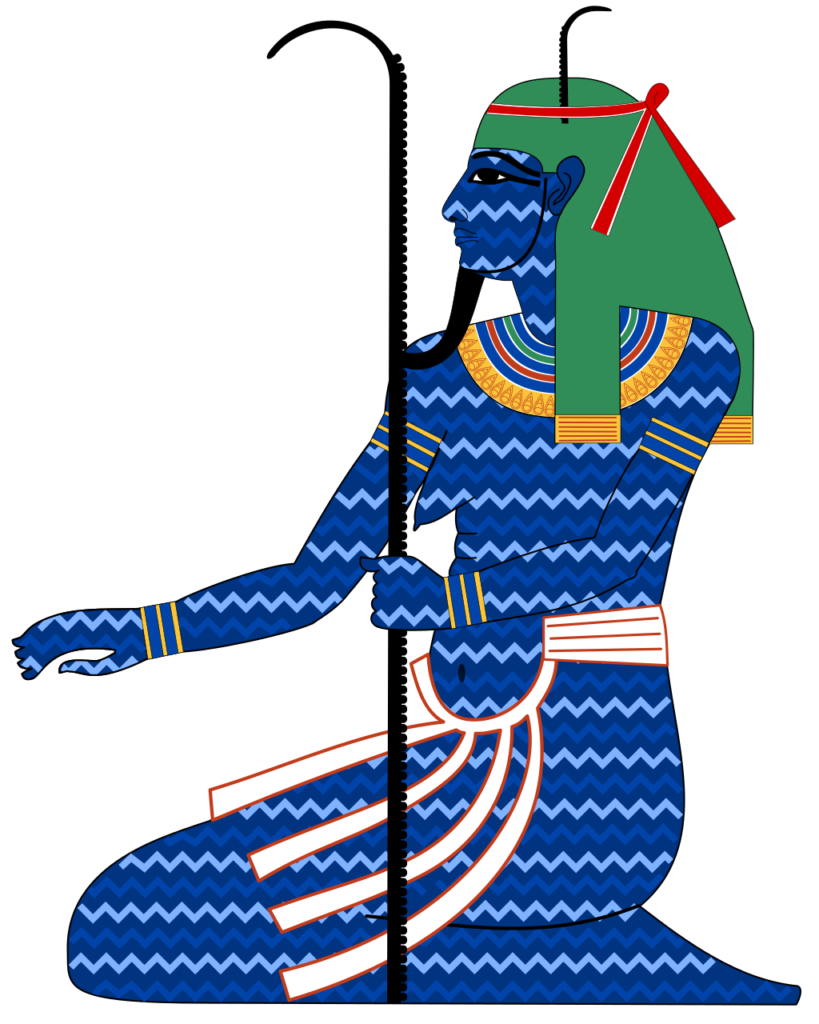
In the beginning the world was a primordial watery abyss inhabited by Nun or Nu the primordial god.
From which arose ………
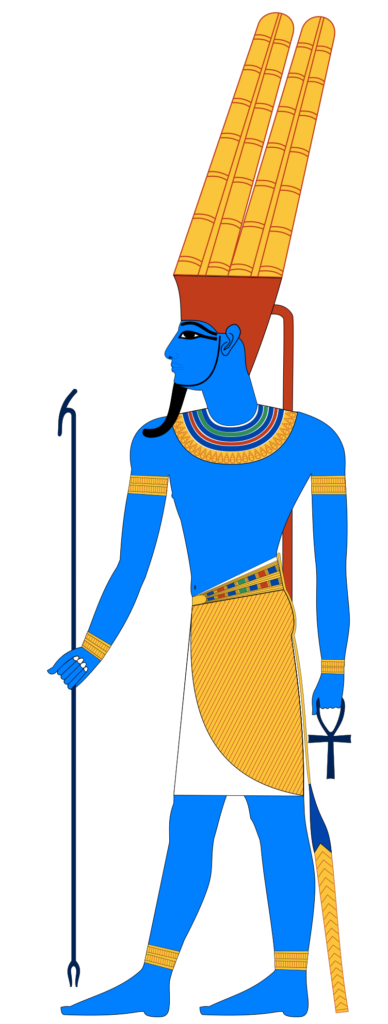
The creator who made himself out of nothing. He was then joined with RA the sun god to make Amun Ra, Atum Ra etc.
Temples: Karnak, Abu Simbel (partially)
He then created offspring, Shu & Tefnut who had a daughter and son Geb and Nut. They were found by their father sleeping together so he pushed them apart, Nut to become the sky and Geb the earth. Look out for this in the tombs and temples along the Nile. As a creation myth you will see it depicted many times.
Geb & Nut (the incestuous sky and earth) had children: Isis, Osiris, Nephyths, and Seth.
Now these are your main need to know deities so lets find out why they were so influential…..
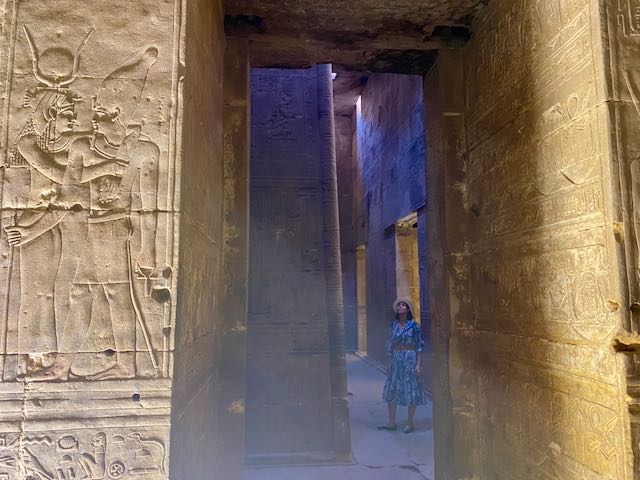
Isis and Osiris are associated with the Kings and Queens of Egypt so they are depicted with Pharoahs, and sometimes Pharoahs have certain props or aspects of them eg. crown, colouring, crook etc.
Osiris was King of Egypt known for being the god of Agriculture (and later reincarnation) and his wife Isis was Queen and Goddess of birth, who taught women how to grind wheat, weave cloth and prevented evil. The story goes that Seth (God of Chaos and Storms) was jealous of his brother Osiris and his wife. So he murdered Osiris cut him up into 14 tiny parts and scattered them across Egypt and took the throne.
Nephthys, sister to Isis helped her gather the pieces, wrap them up (mummification) and invoke a spell so Osiris could impregnate her with a son, Horus (falcon god). Fearing Seth’s wrath, Isis hid Horus with Hathor (Cow Goddess) who brought him up and taught him about Seths evil.
There were many fights between Horus and Seth but finally Horus emerged victorious and Seth was banished to the outskirts of Egypt where he became lord of the Desert and Foreigners…hmm.
In life Egyptian Pharaohs were seen as the personification of Horus (you will see on the temples they take a falcon aspect), and in death they were seen as the personification of Osiris. Osiris myth is widely regarded to be the first around mummification (hence his being God of rebirth and Underworld), which signifies renewal of life in the next world and led to a continued practice for all Egyptians so they could be reborn in the afterlife.
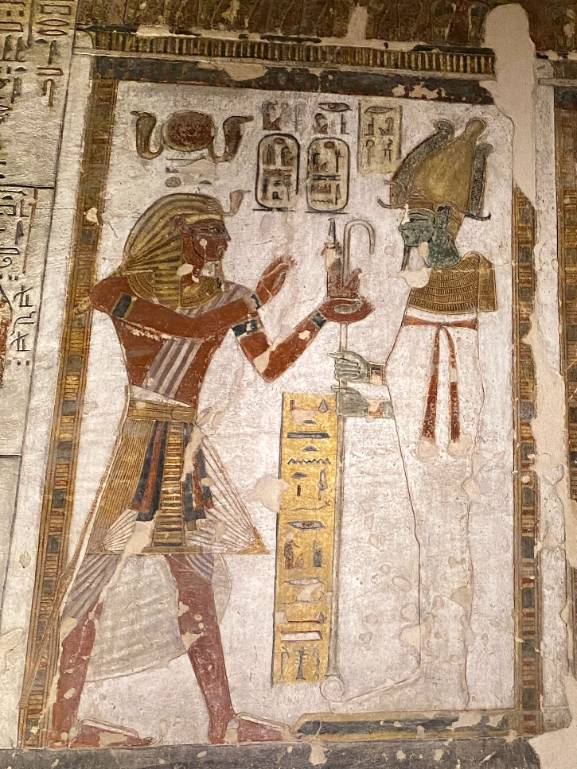
Osiris is often depicted as a mummy, arms crossed at chest, holding a flail and crook, with the white crown of Upper Egypt on his head and 2 ostrich feathers. Look out for the white crown on the temples as you visit them.
Isis is often depicted holding baby Horus and nursing him, it is believed that depictions of her influenced the Christian images of Mary and Jesus.
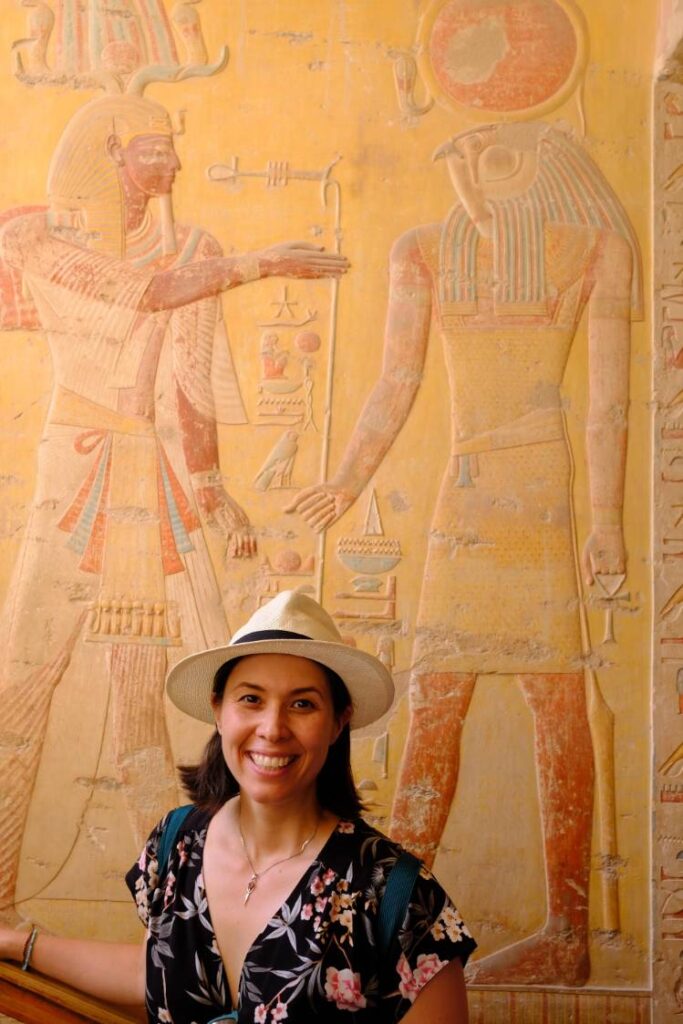
Horus, (right) the falcon-headed God of the sky and hunting and as the embodiment of divine Kingship he is depicted everywhere! In one of his many battles with Seth, he lost an eye (but got it back thanks to Thoth) and since his eyes were believed to represent the sun and the moon, it was a representation of the moon cycle. Everyone loves Horus – he is depicted on ALL the temples.

She is one of my favourite goddesses whom you can see at the Temple of Philae and Kom Ombo. She is the vengeful manifestation of Ra in one of the many myths, Sekhmet was sent to destroy mortals who conspired against Ra. Her blood lust was not quenched at the end of the battle and she kept killing, almost destroying humanity. To stop her Ra poured beer dyed with red ochre so it resembled blood. She drank it and gave up the slaughter.
Sekhmet and Bastet (Cat Goddess who Is also a favourite) often have similar attributes.
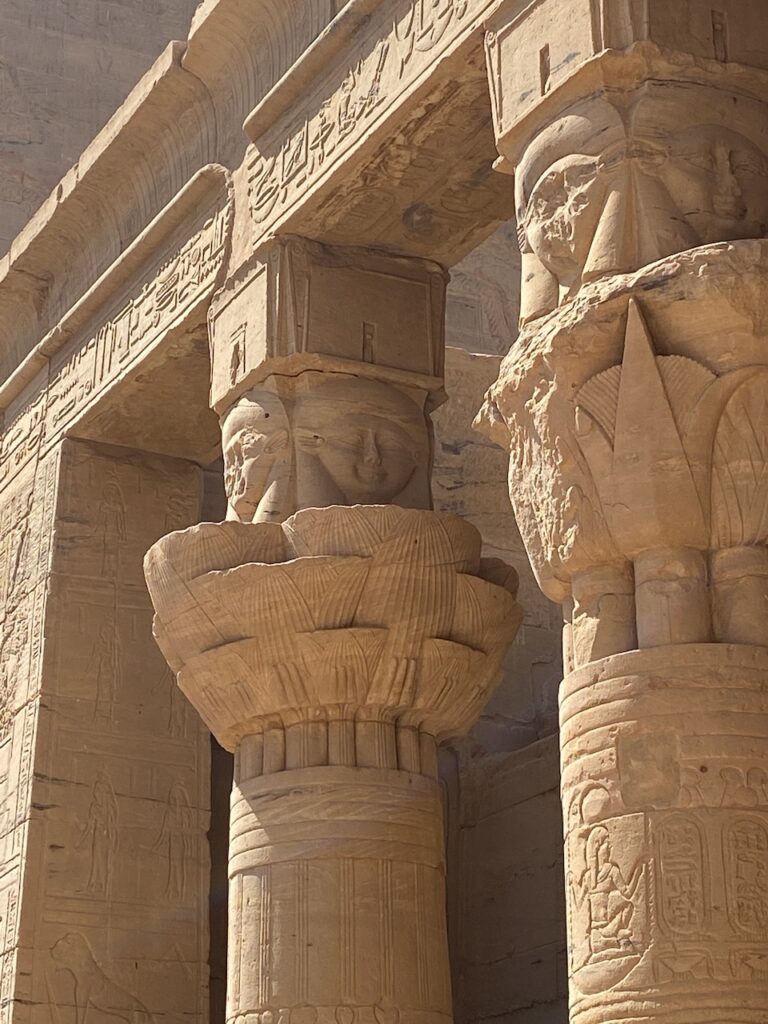
Goddess of sky, stars, birthing, love, motherhood, music and dancing.
Hathor was associated with the Isis/Osiris myth. She nursed the baby Horus when Isis left to find Osiris (after Set had killed him), she brought up him and helped him kill Seth his uncle who killed Osiris. She was the divine mother of Queens and milk was sacred so you can see images of Cow Hathor nursing baby Horus asserting his right to rule.
You can also see her fully at the Temple of Edfu in doorways.
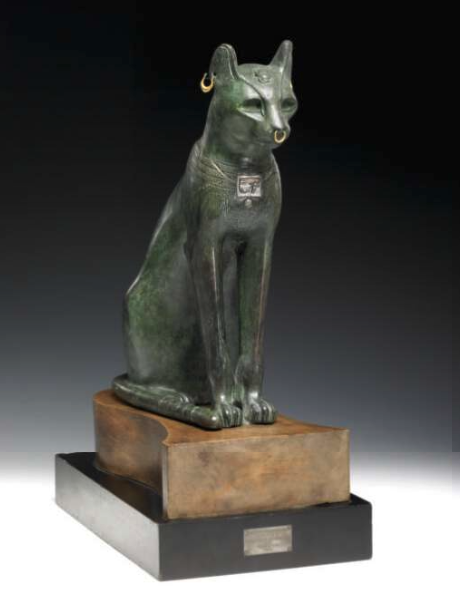
Fierce goddess of the sun, pregnancy, childbirth who fought the evil snake Apep, enemy of Ra. Associated with Wadjet the oldest Egyptian Goddess.
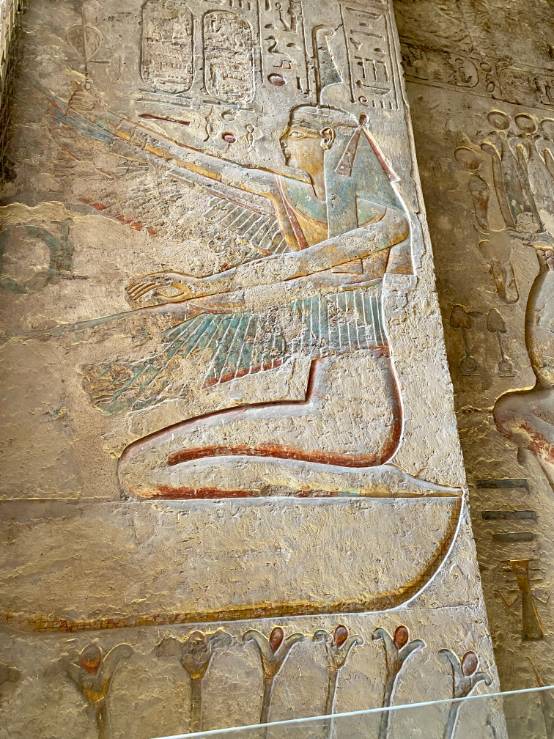
She represents truth (ostrich feather), cosmic balance, order, harmony and justice. Her main role was to weigh the heart in the afterlife. Her feather measured whether the soul (in the heart) was allowed to reach paradise.
She can be seen at the entrance to the Ramesses III tomb in Valley of the Kings (on the right).
Maat is how ancient Egyptians were meant to live their lives.
A passage from Ptahhotep presents Maat as instruction:
Be generous as long as you live
What leaves the storehouse does not return;
It is the food to be shared which is coveted,
One whose belly is empty is an accuser;
One deprived becomes an opponent,
Don’t have him for a neighbor.
Kindness is a man’s memorial
For the years after the function.[49]
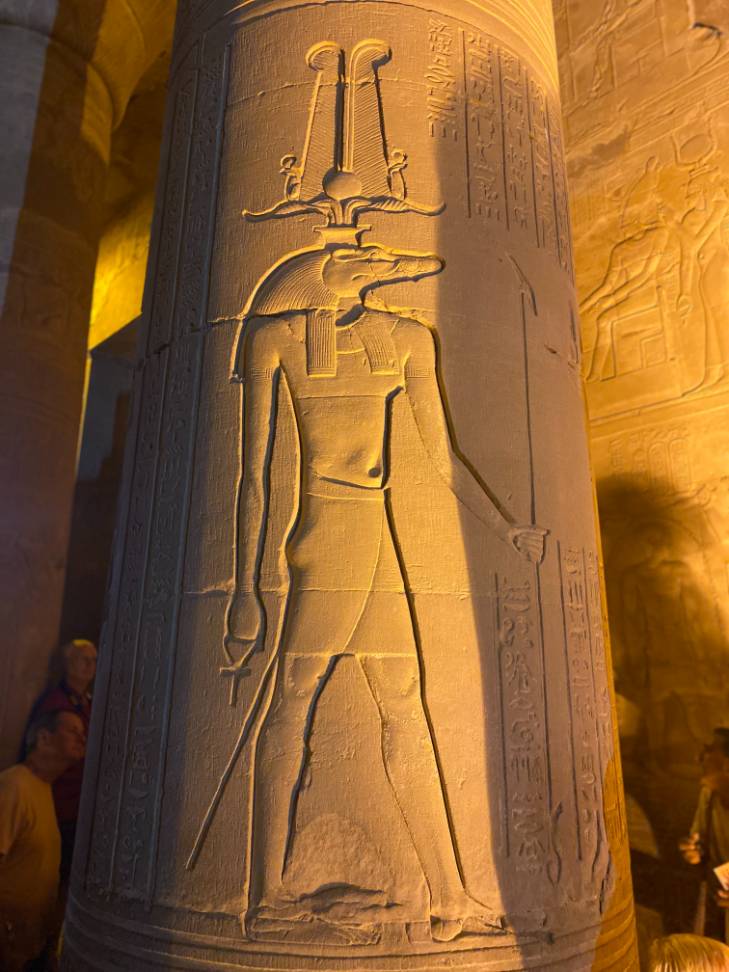
Sobek our Crocodile god, resides at the temple Kom Ombo. There you will see his crocodile head over and over, and nearby is a small museum of ancient mummified crocodiles that were given as offerings to him.
There is a nearby shallow pond that used to hold many crocodiles…and no fence….eek!
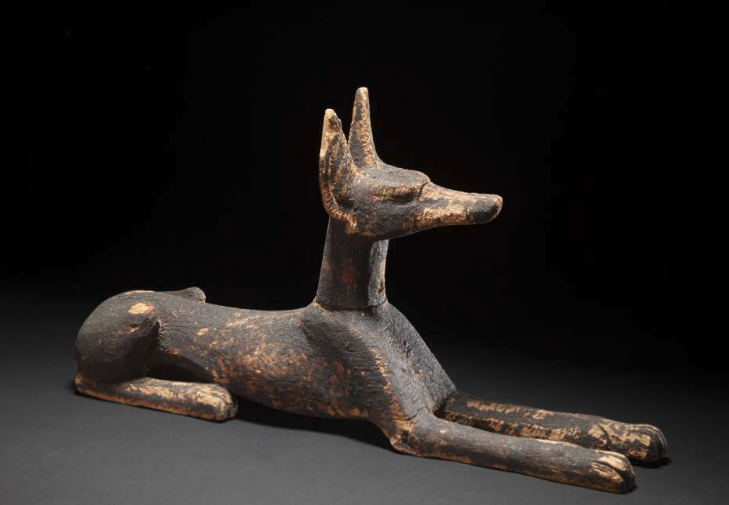
Anubis – Jackal god of embalming and funerary rites. He is associated with all the roles of the dead such as embalmer, protector of tombs, weighing of the heart and guiding the dead.
We hope this gives you a little primer on the amazing artwork and statues you will be seeing on your trip, plus a bit more to look out for when you visit the temples (or watch Moon Knight).
Enjoy your time in Egypt do check out our Cairo Blog for more inspiration!
These are just a few of the Gods & Goddesses that you can hopefully spot on your travels! There are so many more stories to tell and learn and if you are keen please do check out the books below:
Egyptian Mythology: A guide to Gods, Goddesses and Traditions of Ancient Egypt – Geraldine Pinch
Egyptian Mythology A very short Introduction – Geraldine Pinch
The Egyptian Book of the Dead – John Romer
